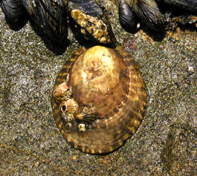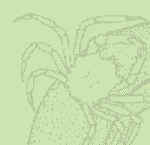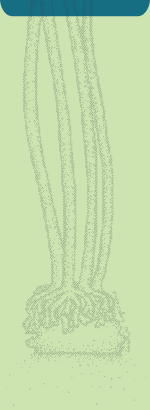Mobile Invertebrates
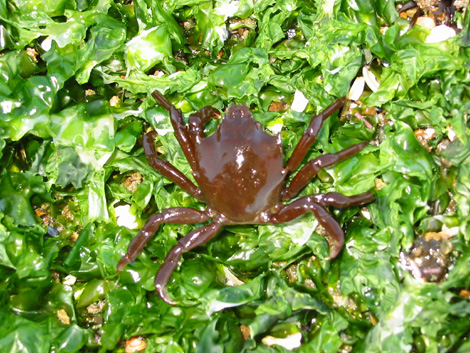
 The point contact method is efficient for measuring the abundance of spatially common
organisms, but it does not adequately represent rare or spatially uncommon organisms such as
mobile invertebrates. The abundance of mobile invertebrates is
measured using 50 x 50 cm quadrats.
Each transect is divided into three regions, representing
the high, mid and low zone biology. Quadrats are randomly placed within each of the three
zones on each transect line resulting in 33 plots. See diagram below.
The point contact method is efficient for measuring the abundance of spatially common
organisms, but it does not adequately represent rare or spatially uncommon organisms such as
mobile invertebrates. The abundance of mobile invertebrates is
measured using 50 x 50 cm quadrats.
Each transect is divided into three regions, representing
the high, mid and low zone biology. Quadrats are randomly placed within each of the three
zones on each transect line resulting in 33 plots. See diagram below.
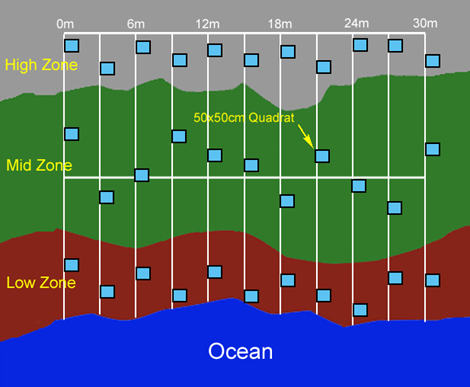
Mobile invertebrates in the quadrat, such as snails, limpets and crabs, are identified, counted and recorded on a data sheet. Organisms living within the interstices (the spaces between the substrate and the sessile organisms such as mussels) are not recorded because in order to obtain an accurate count the organisms creating the interstices would have to be removed.

